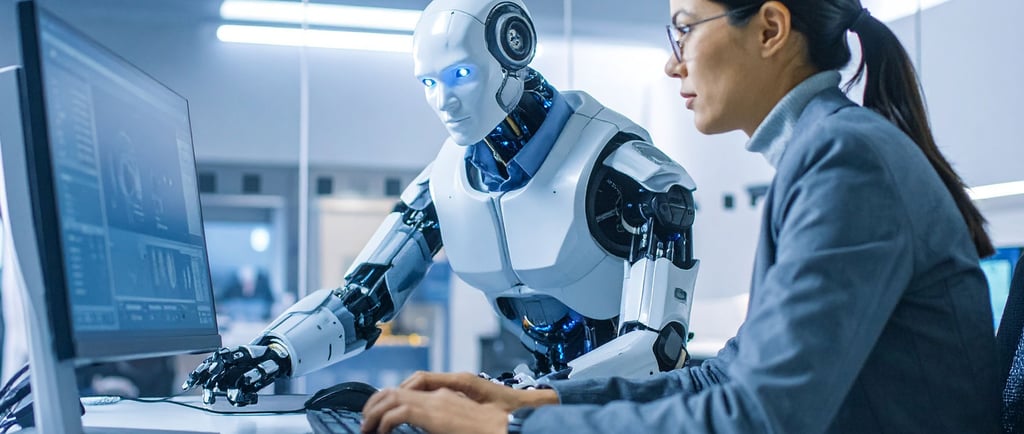How AI Is Transforming the Creative Process in Graphic Design
Discover how AI is revolutionizing graphic design—streamlining the tedious, sparking limitless creativity, and empowering designers to deliver faster, smarter, and truly personalized visuals without losing the human touch.
ARTIFICIAL INTELLIGENCE
Avinash
11/4/20252 min read


Artificial intelligence is rapidly reshaping the world of graphic design—empowering creatives, speeding up workflows, and pushing the boundaries of what’s possible every day.
Introduction: The Rise of AI in Design
The integration of AI into graphic design is not just a passing trend—it’s a fundamental shift in how visuals are conceived, produced, and refined. New AI-powered platforms like Adobe Firefly, Canva Magic Studio, DALL·E 3, and Designs.ai put previously unthinkable capabilities at a designer’s fingertips: image generation from text, adaptive branding, perfect color palette creation, and more.
Automating Tedious Tasks
AI automates the dullest parts of the designer’s workload, such as background removal, content resizing, and quick editing. These tools can instantly erase unwanted objects, suggest the best font pairings, and adapt designs to multiple formats with a single click. The result? Designers spend less time on repetitive processes and more on ideation and creativity.
Amplifying Creativity
Perhaps the most exciting element is how AI expands creative potential. Generative AI can produce a variety of visual alternatives—logos, infographics, social images, product mockups—based on simple prompts or rough sketches, giving designers more starting points and sparking ideas that may not have surfaced otherwise. AI-powered image generation (e.g., Adobe Firefly, DALL·E 3, Midjourney) allows designers to experiment rapidly with composition, color, and style.
Customization and Personalization
AI is particularly powerful in creating highly tailored and interactive designs. Advanced platforms use machine learning to analyze a brand’s existing assets, audience preferences, and market trends, then generate cohesive, on-brand visuals at scale. This level of personalization enhances engagement and elevates marketing and digital experience.
Democratizing Design
Tools like Canva and AutoDraw lower the barrier for non-designers, making it easy for anyone to produce polished graphics, marketing materials, or presentations with minimal effort and maximum impact. Freelancers, startups, and small businesses can now access professional-level design power on par with big agencies.
Human Creativity: Still Essential
Despite the power and convenience of AI, human intuition and conceptual thinking remain indispensable. AI excels at generating options and handling routine work, but it is designers who define the vision, message, and emotion that make visuals unforgettable. The future is not machine versus designer, but an innovative partnership.
Looking Ahead: AI as a Creative Partner
Going forward, expect more seamless integration between AI and traditional tools, along with continued advancements in generative design, interactive interfaces, and content personalization. The designers who thrive in this landscape will be those who embrace AI to amplify their unique creative vision.
In short, AI is not replacing creative professionals—it is supercharging their possibilities and redefining the creative process for the better.
